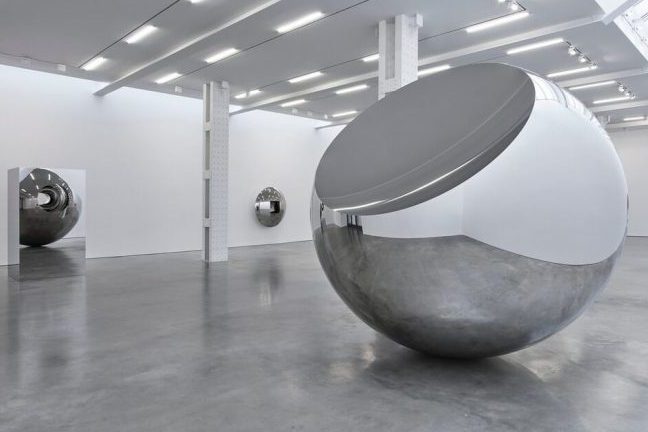
“SCALE, COLOR, VOLUME” ANISH KAPOOR AT LISSON GALLERY
Anish Kapoor, one of the most celebrated artists of his generation shows his latest sculptures at Lisson Gallery New York in a stunning first show of the artist in the Unitde States.
The show presents new and recent sculptures, both wall-based and freestanding. This exhibition follows recent shows this Spring: at Lisson Gallery and Pitzhanger Manor, London, and at Fundación CorpArtes, Chile.
Kapoor redefined contemporary sculpture in the 1980s through innovative approaches to scale, color, volume and materiality, and by delving into the illusory. Perhaps most famous for public sculptures that are both adventures in form and feats of engineering, Kapoor’s works invite viewers to interrogate their relation to inhabited space.
Whether through a seemingly infinite black hole or an impossible reflection, Kapoor confronts our expectation of optical perception, forcing a re-examination of one’s phenomenological experience.
Kapoor redefined contemporary sculpture in the 1980s through innovative approaches to scale, color, volume and materiality, and by delving into the illusory. Perhaps most famous for public sculptures that are both adventures in form and feats of engineering, Kapoor’s works invite viewers to interrogate their relation to inhabited space. Whether through a seemingly infinite black hole or an impossible reflection, Kapoor confronts our expectation of optical perception, forcing a re-examination of one’s phenomenological experience.
One of the defining languages of Kapoor’s oeuvre is indisputably his manipulation of space, and the mirrored surface as a material in this endeavor can be seen internationally through his major public commissions. These highly reflective works combine a painterly subtlety with a powerful monumentality, contrasting the stillness of a flawlessly polished surface with an ever-oscillating echo of its environment.
A major new mirror work, Tsunami (2018), will sit at the core of the Lisson Gallery exhibition. This large-scale, mesmerizing sculpture derives its form from the projection of a circle onto an hourglass, a historic symbol connected to the sign of infinity and the endless time of a Möbius strip. These intertwining curvatures come together into a seamlessly fluid shape, wondrously transcending the boundaries of volume, and capturing a metaphorical infinity within its surface.
The raised edge of the sculpture invites the audience to gaze into a self-reflecting void where their reflection descends into an ambiguous limitless space. The area beneath the sculpture becomes, like in many of Kapoor’s works, a negative one, a void. Simultaneously dominating the terrain and dissolving into it, this massive form hovers gracefully on the ground at two precise points, miraculously poised and balanced.
The title, Tsunami, conjures awe, referencing an ominous, powerful force that appears as if from nowhere. Kapoor invites the viewer to not simply look at the object, but through and beyond it, invoking both terror and beauty, and questioning absence and presence in the face of the force of nature. Since the Romantic conception of the sublime, artists such as Caspar David Friedrich have expressed the sensation of wonder evoked by the natural landscape. Unlike Friedrich, Kapoor’s stainless steel works gaze back at you, existentially reflecting the self.
You May Also Like

OLAFUR ELIASSON AT FONDATION VUITTON
12/10/2020
BRAZIL & MODERNISM RECAPTURED
20/08/2020

